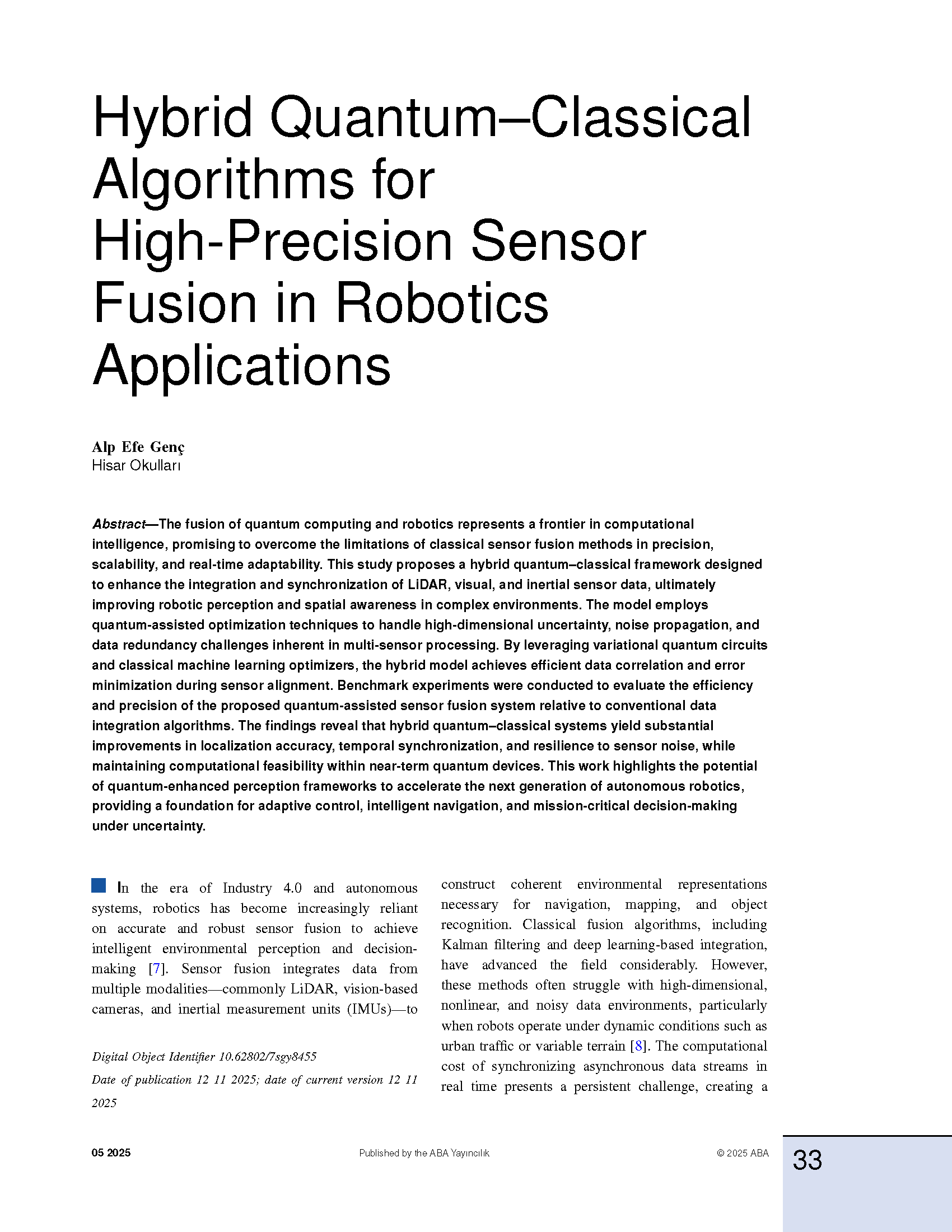Hybrid Quantum–Classical Algorithms for High-Precision Sensor Fusion in Robotics Applications
DOI:
https://doi.org/10.62802/7sgy8455Keywords:
hybrid quantum–classical algorithms, quantum-assisted optimization, sensor fusion, robotics, LiDAR, visual–inertial integration, spatial accuracy, autonomous navigationAbstract
The fusion of quantum computing and robotics represents a frontier in computational intelligence, promising to overcome the limitations of classical sensor fusion methods in precision, scalability, and real-time adaptability. This study proposes a hybrid quantum–classical framework designed to enhance the integration and synchronization of LiDAR, visual, and inertial sensor data, ultimately improving robotic perception and spatial awareness in complex environments. The model employs quantum-assisted optimization techniques to handle high-dimensional uncertainty, noise propagation, and data redundancy challenges inherent in multi-sensor processing. By leveraging variational quantum circuits and classical machine learning optimizers, the hybrid model achieves efficient data correlation and error minimization during sensor alignment. Benchmark experiments were conducted to evaluate the efficiency and precision of the proposed quantum-assisted sensor fusion system relative to conventional data integration algorithms. The findings reveal that hybrid quantum–classical systems yield substantial improvements in localization accuracy, temporal synchronization, and resilience to sensor noise, while maintaining computational feasibility within near-term quantum devices. This work highlights the potential of quantum-enhanced perception frameworks to accelerate the next generation of autonomous robotics, providing a foundation for adaptive control, intelligent navigation, and mission-critical decision-making under uncertainty.
References
Chen, L., Gupta, R., & Lee, J. (2025). Quantum-assisted perception models for autonomous robotics. IEEE Transactions on Robotics, 41(2), 112–127.
Columbus Chinnappan, C., Thanaraj Krishnan, P., Elamaran, E., Arul, R., & Sunil Kumar, T. (2025). Quantum Computing: Foundations, Architecture and Applications. Engineering Reports, 7(8), e70337.
Lellouch, S., & Holynski, M. (2025). Integration of a high-fidelity model of quantum sensors with a map-matching filter for quantum-enhanced navigation. arXiv preprint arXiv:2504.11119.
Thi, H. L. (2025). Advancements in Quantum Computing: Revolutionizing Sensor Fusion and Data. Intelligent Sustainable Systems: Selected Papers of WorldS4 2024, Volume 4, 1180, 123.
Tomar, S., Tripathi, R., & Kumar, S. (2025). Comprehensive survey of qml: from data analysis to algorithmic advancements. arXiv preprint arXiv:2501.09528.
Yang, B., Li, J., & Zeng, T. (2025). A review of environmental perception technology based on multi-sensor information fusion in autonomous driving. World Electric Vehicle Journal, 16(1), 20.
Zhang, P., & Singh, A. (2024). Multimodal sensor fusion for robotic mapping and navigation: Classical and emerging paradigms. Robotics and Autonomous Systems, 162, 104417.


